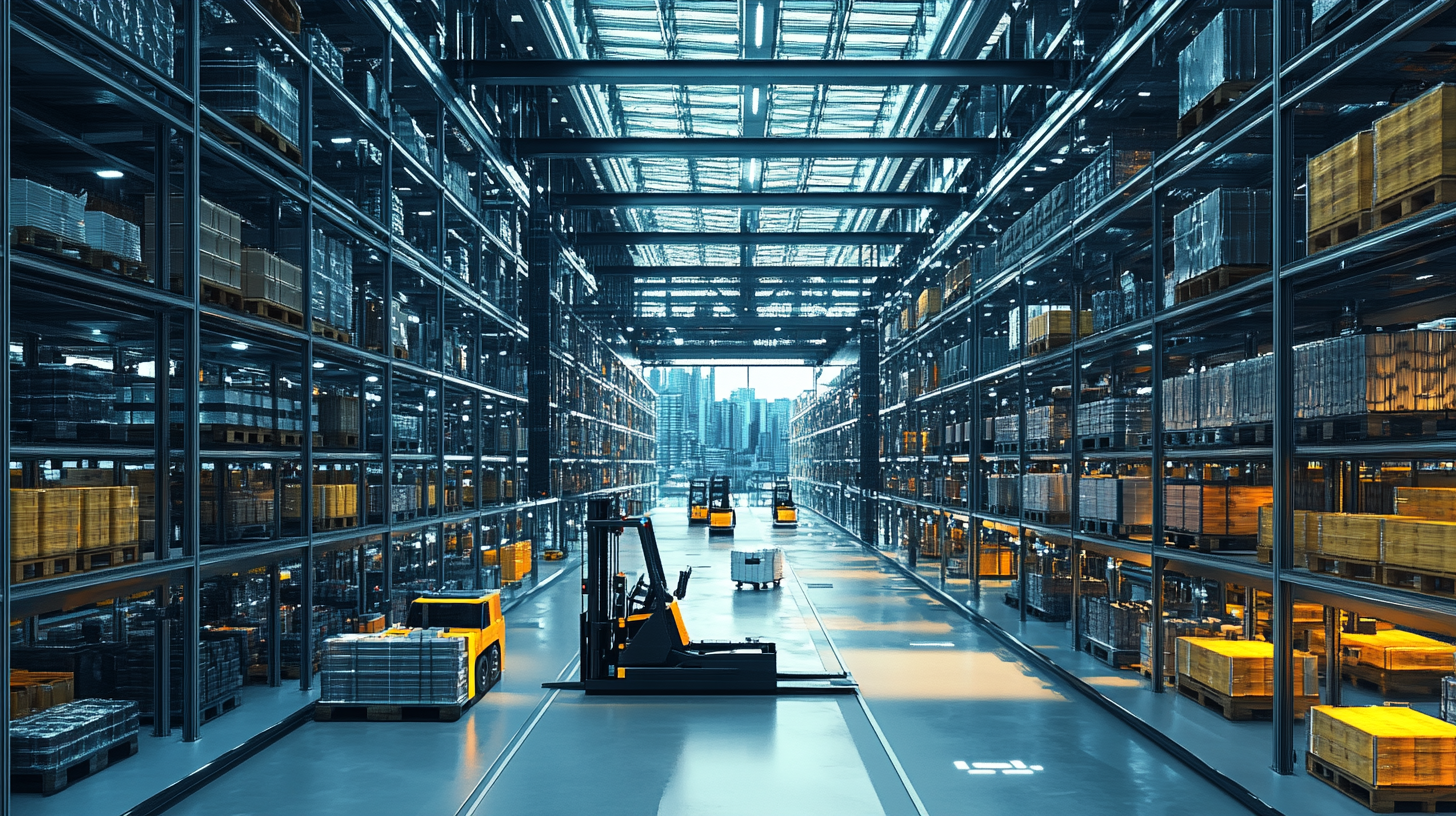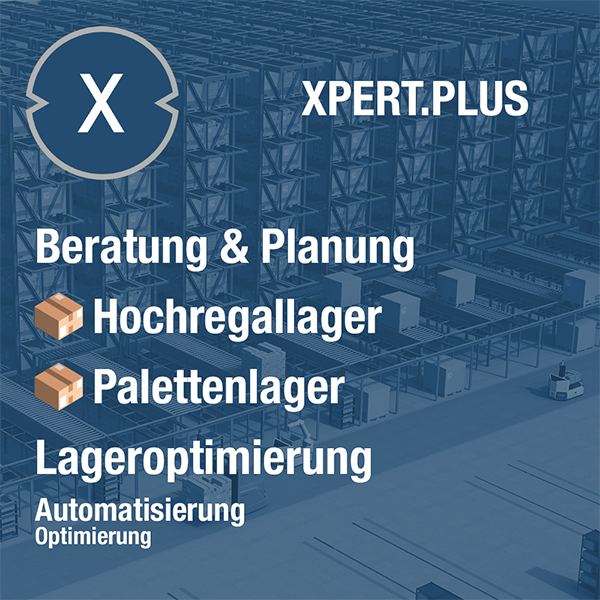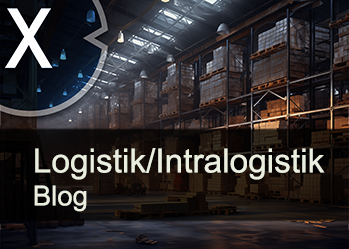Automated high-bay warehouses and pallet warehouses in the USA: Market development and innovations in logistics and intralogistics
Xpert pre-release
Language selection 📢
Published on: January 4, 2025 / Updated on: November 28, 2025 – Author: Konrad Wolfenstein

Automated high-bay warehouses and pallet warehouses in the USA: Market development and innovations in logistics and intralogistics - Image: Xpert.Digital
Increasing efficiency in the high-tech warehouse: The role of automation in the USA
Warehousing in the USA is changing rapidly. Driven by factors such as the e-commerce boom, increasing demands for supply chain efficiency and ongoing labor shortages, companies are increasingly investing in automated solutions for their warehouses. This report examines the market development of automated high-bay warehouses and pallet warehouses in the USA and highlights the latest innovations in this area.
Market development in the USA
The warehouse automation market in the US is experiencing strong growth. According to Precedence Research, the global warehouse automation market reached $18.1 billion in 2023 and is expected to reach $71.03 billion by 2032, growing at a compound annual growth rate of 15.91%.
Next Move Strategy Consulting estimates that the US warehouse automation market value was $6.7 billion in 2022 and will grow to $16.5 billion by 2030 at a CAGR of 9.2%.
Grand View Research predicts the market will be $59.52 billion in 2030 and expects an annual growth rate of 18.7% between 2024 and 2030.
It is important to note that estimates and forecasts vary between sources:
- Different geographical coverage: While two sources provide global numbers, one focuses on the US market.
- Varying Growth Rates: Projected annual growth rates range from 9.2% to 18.7%.
- Different market sizes: Estimates for the global market size in 2030 vary between $59.52 billion and $71.03 billion.
Global market size and growth
These numbers illustrate the increasing importance of automated solutions in US warehousing. North America takes a leading position and dominated the global warehouse automation market in 2023 with a market share of 37%. The US warehouse automation market is expected to grow at a CAGR of 16.1%. An annual growth rate of 16.70% is forecast for the North American market. The US is at the forefront of adopting automation solutions to meet the needs of its massive e-commerce industry, which sets high standards for speed, accuracy and efficiency in order fulfillment.
Despite a recent slowdown, the warehouse automation sector is poised for significant change and growth. Over 80% of warehouses today have no automation whatsoever, but this will change dramatically in the next 5 to 10 years. Companies are increasingly investing in automation technologies to meet growing consumer demand for faster delivery times and address the challenges of labor shortages.
The pallet racking systems market in North America is estimated to be worth $4.04 billion in 2024 and is expected to grow at a CAGR of 9.43%. The market value for warehouse conveyor systems is estimated at $15.32 billion in 2024 and is expected to grow to $20 billion by 2030 at a CAGR of 4.5%.
Drivers of market growth
Several factors are contributing to the growth of the automated high bay and pallet warehouse market in the US:
E-commerce boom
The continued increase in online trading leads to an increased need for efficient warehousing and logistics processes. Automated solutions enable faster order processing and higher throughput rates.
Increasing demands on supply chain efficiency
Companies are under pressure to optimize their supply chains and shorten delivery times. Automated warehouses help increase efficiency and reduce costs.
Labor shortage
There is a shortage of qualified workers in many industries. Automated solutions can help bridge this gap and reduce reliance on manual work.
Technological advances
The rapid development of technologies such as artificial intelligence, robotics and the Internet of Things (IoT) enables increasingly advanced automation solutions.
Increasing demand for wooden pallets
Expansion of the warehousing, logistics, food and beverage, and manufacturing industries is driving demand for wooden pallets in the United States. The e-commerce boom has led to a rise in warehouse construction, and other industries such as B. renewable energies contribute to this trend.
Impact of the e-commerce boom on the pallet racking system market
Increasing e-commerce activity is boosting the warehousing and distribution segment and increasing the need for efficient storage solutions. With the increase in online sales, warehouses need to optimize available space and improve inventory management. This leads to increased use of pallet racking systems, resulting in faster order processing and greater logistics efficiency, increasing market growth.
Challenges and risks
Rapid technological advances pose a potential risk to ASRS systems as they can quickly become obsolete. Companies must continually stay up to date with the latest technologies and adapt their systems accordingly in order to remain competitive.
Latest innovations
Automated high-bay warehouses
- Vectura stacker crane: Swisslog has developed an innovative stacker crane called Vectura, which impresses with its high performance and energy efficiency. A new mast design combined with intelligent control ensures energy savings of up to 20%.
- PowerStore Shuttle System: Swisslog's PowerStore Shuttle system is specifically designed for high throughput requirements in a high-density pallet warehouse.
- Fully automated high-bay warehouse from Continental: Continental has opened a fully automated high-bay warehouse with a storage capacity of over 930,000 tires at its tire plant in Otrokovice, Czech Republic. The 43 meter high warehouse uses mobile forklifts that automatically move the tires stored on pallets around the storage area.
Pallet warehouse
- Modula Pallet: Modula has brought an innovative pallet storage system to the US market called Modula Pallet. The system keeps pallet movements at ground level, optimizing vertical space and reducing risks associated with lifting and storage at height.
- Lineage Eye: Lineage has developed Lineage Eye, a combination of pallet scanning hardware and computer vision software that optimizes the receiving process.
- Moffett Taxi™ System: Moffett Automation offers the Moffett Taxi™ System, which enables higher pallet density per square meter than any other automated warehouse solution in the world. The system can carry loads of up to 1500 kg and reaches every corner of the warehouse.
The innovations described show a clear trend towards increased efficiency, improved storage density and increased safety in automated high-bay warehouses and pallet warehouses.
Key player in the pallet storage market
The key players in the US pallet storage market include:
- Daifuku
- Millwood, Inc.
- Anderson Pallet and Crate Inc.
- TMF Corporation
- Orbis Corporation
- Kamps Inc.
- Palletone Inc.
- John Rock, Inc.
Comparison with other countries
While the US is a leader in warehouse automation, other countries are also seeing strong growth, particularly in Europe. In 2020, Germany and the UK led the European warehouse automation market, while the US was the world's largest market at $8.1 billion. The annual growth rate of the US warehouse automation market is estimated at 16.1%.
The UK is expected to become the largest warehouse automation market in Europe by 2025, overtaking Germany, with an annual growth rate of 24%. By 2025, the British market is expected to reach a volume of $3.9 billion, making it $0.9 billion larger than the German market.
Demand for automated solutions is increasing
The market for automated high-bay warehouses and pallet warehouses in the USA is in a dynamic development phase. Driven by factors such as the e-commerce boom, increasing demands for supply chain efficiency and ongoing labor shortages, companies are increasingly investing in automated solutions. The latest innovations enable greater efficiency, improved storage density, optimized processes and increased safety.
The trend towards automation is expected to increase in the coming years as more and more companies realize the benefits of this technology in their warehousing. The increasing demand for faster delivery times, the need to reduce costs and overcome the challenges of labor shortage will drive further development of the market.
Warehousing automation not only impacts the efficiency and profitability of individual companies, but also the entire economy and global supply chains. By optimizing warehouse processes, companies can strengthen their competitiveness and contribute to economic growth.
LTW Solutions
LTW offers its customers not individual components, but integrated complete solutions. Consulting, planning, mechanical and electrotechnical components, control and automation technology, as well as software and service – everything is networked and precisely coordinated.
In-house production of key components is particularly advantageous. This allows for optimal control of quality, supply chains, and interfaces.
LTW stands for reliability, transparency, and collaborative partnership. Loyalty and honesty are firmly anchored in the company's philosophy – a handshake still means something here.
Suitable for:























